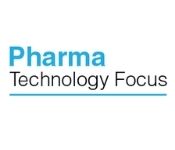
BA-BE 2022

Theme: BA-BE: Essential Innovation in Public and Medical Health
Meetings International gladly invites for the "17thAnnual Summit on Bioavailability and Bioequivalence” which will be held during July 25-26 2022, in London, UK. The theme of the conference is BA-BE: Essential Innovation in Public and Medical Health. Meetings International gives Global Platform to Pharmacologist, Healthcare Professionals, Bioinformatics, Clinical, and Cellular Pharmacologists, and Biotech Professionals to Exchange Ideas, Knowledge and Networking at its World Conferences. BA-BE 2022 essentially revolves around Bioavailability and Bioequivalence for pharmacopeia, in the possession of clinical examiners, give a dynamic and amazing way to deal with understanding the range of medication improvement with evident applications in Drug disclosure, Pharmacogenomics, Clinical preliminaries, Pharmacokinetics and Pharmacology, and Computer-aided drug plan, diagnosis, and disease management.
Session 1: Pharmacokinetic and pharmacodynamics.
Pharmacokinetics is the study of absorption, distribution, metabolism and excretion of drug. The main concept of pharmacokinetics is elimination of chemical xenobiotic from the body. Pharmacodynamics is that the study of the biochemical and physiological effects of drug with the body. The interaction of drug with the receptors located either in the cell membrane or intercellular fluids.
Keywords: Bioavailability Congress | Bioequivalence Congress | Bioavailability Meetings | Bioequivalence Meetings | Bioavailability Workshops | Bioequivalence Events | Bioavailability & Bioequivalence Conferences | Bioavailability Conferences
Session 2: Concept of Equivalents & Pharmaceutical equivalents.
Pharmaceutical equivalents are drug products in identical dosage forms and route(s) of administration that contain identical amounts of the identical active drug ingredient, i.e., an equivalent salt or ester of the same therapic moiety, or, with in the case of modified-release dosages that need a reservoir, such forms as prefilled syringes where the volume may vary, that delivers identical amounts of the active ingredient over the identical dosing period; it don't necessarily contain an equivalent inactive ingredients; and meet the identical compendial or other applicable standard of identity, strength, quality, and purity, including potency and, where applicable, content uniformity, disintegration times, and/or dissolution rates.2 They will differ in characteristics like shape, scoring configuration, release mechanisms, packaging, excipients (including colours, flavours, preservatives), expiration date/time, and, within certain limits, labelling.
Keywords: Bioavailability Congress | Bioequivalence Congress | Bioavailability Meetings | Bioequivalence Meetings | Bioavailability Workshops | Bioequivalence Events | Bioavailability & Bioequivalence Conferences | Bioavailability Conferences
Session 3: Factors affecting Bioavailability of a Drug
Factors affecting bioavailability are differentiated into pharmaceutical and pharmacological factors. Disintegration, dissolution and absorption affects the bioavailability of drugs. Pharmaceutical factors are particle size, nature of excipients and adjuvants, degree of ionization...Pharmacological factors are gastric emptying and gastrointestinal motility, gastro intestinal diseases, food and other substances, first pass metabolism, drug-drug interactions, and route of administration.
Keywords: Bioavailability Congress | Bioequivalence Congress | Bioavailability Meetings | Bioequivalence Meetings | Bioavailability Workshops | Bioequivalence Events | Bioavailability & Bioequivalence Conferences | Bioavailability Conferences
Session 4: First pass metabolism.
The first pass effect is a phenomenon in which a drug gets metabolized at a specific location in the body that results in a reduced concentration of the active drug upon reaching its site of action or the circulation. The first pass effect is usually related to the liver, as this is often a serious site of drug metabolism. Let’s take a example of 100 drug molecules that are ingested in pill form. Only 90 of those molecules survive the alimentary canal . Then 81 make it past the gut wall and into the hepatic portal vein . Of the 81 that enters the liver, only 41 can make it to the systemic circulation. Thus the bioavailability is 41/100 = 41%. We also know the fraction that was passed through the gut (90/100 = 90%), the gut wall (81/90 = 90%), and the liver (41/81 = 50%). If you multiply each of these fractions together (90% * 90% * 50% = 41%) you reach the overall bioavailability for the drug. However, the primary pass effect also can occur within the lungs, vasculature, GI tract, and other metabolically active tissues within the body. This effect can become augmented by various factors like plasma protein concentrations, enzymatic activity, and gastrointestinal motility. The extent to which a patient may experience the first pass effect varies from patient to patient, and this must even be taken into consideration when determining appropriate dosing. If the first-pass effect is exceptionally prominent in patient, the drug may require administration via different route to bypass the first-pass effect.
Keywords: Bioavailability Congress | Bioequivalence Congress | Bioavailability Meetings | Bioequivalence Meetings | Bioavailability Workshops | Bioequivalence Events | Bioavailability & Bioequivalence Conferences | Bioavailability Conferences
Session 5: Absolute & Relative bioavailability
Absolute Bioavailability:
Compares the bioavailability of the active drug in systemic circulation following Non-intravenous administration with an equivalent drug following intravenous administration for drugs administered intravenously, bioavailability is 100%. Determination of the best administration route
Relative Bioavailability:
Compares the bioavailability of a formulation (A) of particular drug in comparison with another formulation (B) of an equivalent drug.
Keywords: Bioavailability Congress | Bioequivalence Congress | Bioavailability Meetings | Bioequivalence Meetings | Bioavailability Workshops | Bioequivalence Events | Bioavailability & Bioequivalence Conferences | Bioavailability Conferences
Session 6: Drug metabolism.
One of the most challenging advanced research areas in pharmacology with in the new millennium is to know why every individual respond differently to drug therapy and to what extent that individual variability in disposition is liable for the observed differences in therapeutic efficacy and adverse reactions. Drug metabolism reactions are of two stages: stage 1 (functionalization) reactions like oxidation, hydrolysis; and stage II (conjugation) reactions like glucuronidation, sulfate conjugation. Newly introduced drugs are associated with 551 bioactivity points from ChEMBL (65.5%), manual curation from literature (24.14%), the Guide to Pharmacology (6.17%) and approved drug labels (4.17%), respectively; as well as 109 mechanism of action (MoA or Tclin proteins—vide infra) targets, with kinases (26%) and enzymes (21%) representing the major target categories, followed by G-protein-coupled receptors—GPCRs (17%) and tumor-associated antigens (9%).
Keywords: Bioavailability Congress | Bioequivalence Congress | Bioavailability Meetings | Bioequivalence Meetings | Bioavailability Workshops | Bioequivalence Events | Bioavailability & Bioequivalence Conferences | Bioavailability Conferences
Introduction
The pharmaceutical industry is comprised of companies engaged in researching, developing, manufacturing and distributing drugs for human or veterinary use. New drugs have an enormous positive influence on global health, prosperity and economic productivity by saving lives, increasing life spans, reducing suffering, preventing surgeries and shortening hospital stays. Advances in medicine have eliminated deadly diseases and have brought other life-threatening conditions under control. Drug therapy is now an integral part of nearly every facet of healthcare, and new breakthroughs promise to revolutionize the treatment of non-communicable diseases.
Industry Overview and Competitiveness:
Large, diversified and global, the U.S. pharmaceutical industry is one of the most critical and competitive sectors in the economy. According to the Pharmaceutical Research and Manufacturers Association (PHRMA), more than 810,000 people work in the biopharmaceutical industry in the United States across a broad range of occupations, such as scientific research, technical support and manufacturing. Directly and indirectly, the industry supports over 3.4 million jobs across the United States and added an estimated $790 billion to the economy in 2014. Although manufacturing jobs supported by the industry are expected to decline over the next decade due to continued productivity gains, it will remain an important source of high paying jobs, providing salaries way above the national average.
Research and development (R&D)
The pharmaceutical sector has consistently been one of the most R&D intensive industries in the United States. The research-based industry generally allocates around 15 to 20 per cent of revenues to R&D activities and invests over $50 billion on R&D annually. Although the United States remains the global leader in innovative R&D investment, producing more than half the world’s new molecules in the last decade, its continued leadership cannot be taken for granted. R&D performed in the United States has become increasingly expensive relative to emerging economies in Asia, such as China and Singapore, where governments have enacted policies to attract investment and are poised for future growth. Conditions that limited R&D offshoring in the past, such as market proximity and availability of talent, are rapidly shifting.
The worldwide market for pharmaceuticals is projected to grow from around $1 trillion in 2015 to $1.3 trillion by 2020, representing an annual growth rate of 4.9 per cent. Several global demographic and economic trends are driving pharmaceutical consumption, including a rapidly aging world population and an associated rise in chronic diseases, increased urbanization and higher disposable incomes, greater government expenditure on healthcare and growing demand for more effective treatments.
Scope and Importance:
FDA ensure that the drug product for marketing should be safe, effective and meet all applicable standards, for this FDA requires bioavailability/pharmacokinetic studies and, where necessary, bioequivalence studies for all drug products (FDA Guidance for Industry, 2003). The U.S. Food and Drug Administration (FDA) define bioavailability as "the rate and extent to which the active drug ingredient or therapeutic moiety is absorbed from a drug product and becomes available at the site of drug action". Generally direct and indirect methods use to assess drug bioavailability.
Societies/Industries/Universities Associated with Pharmaceutical Technology and Development:-
International Society of Pharmaceutical Compounding (ISPhC)
- International Young Pharmacists' Group (YPG)
- Parenteral Drug Association (PDA)
- Regulatory Affairs Professionals Society (RAPS)
- Society for Bio molecular Sciences (SBA)
- Society for Cell Science (SFCS)
- Al-Hayat Pharmaceuticals
- Amgen
- Elis Pharmaceuticals Limited
- Alliance Global
- Sanofi Aventis UAE
- Genpharm
- Ranbaxy Laboratories Limited
- BioPharma
- Hokkaido University
- Waseda University
- Nagoya University
Major Pharmaceutical Associations around the Globe
- Bio analytical Focus Group and Ligand Binding Assay
- American Association of Pharmaceutical Scientists (AAPS)
- Royal Netherlands Chemical Society
- The European Bio analysis Forum
- BEBAC Consultancy Services for Bioequivalence and Bioavailability
- European Federation of Pharmaceutical Industries and Associations (EFPIA)
- European Generics and Bio similar Medicines Association (EGA)
- Canadian Generic Pharmaceutical Association (CGPA)
- Bioequivalence and Bioavailability forum
- Generic Pharmaceutical Association (GPhA)
- Pharmaceutical Management Agency (PHARMAC)
- FDA Office of Surveillance and Epidemiology
- Drug Watch
- ORPHANET Parenteral Drug Association
- PharmGKB
- US Food and Drug Administration (FDA)
Conclusion:
The bioavailability of medicine in recent years has become interesting subject in drug development and also within the early stages of drug discovery. This is a tool to finding that the majority of the candidate drugs that failed in clinical trials due to problems with toxicology and absorption, distribution, metabolism, excretion i.e. ADME, rather than through lack of efficacy. The very hard efforts are being made within the pharmaceutical industry to enhance success rates by taking under consideration the toxicology and ADME aspects in drug discovery. Therefore, it's not surprising to envision that the amount of publications on bioavailability of drug has been highly increasing steadily for some times. In this review, attention is targeted to briefly discuss some terms of bioavailability, absolute bioavailability, and relative bioavailability, measurement of bioavailability and in-vitro dissolution and bioavailability, in-vitro in-vivo correlation, biopharmaceutical classification system, bioequivalence.
Meetings International is announcing Young Scientist Awards through International Conference on Bioavailability and Bioequivalence scheduled during February 21-22, 2022 in Singapore city, Singapore. This Annual BABE Summit focuses on ''BA-BE : Essential Innovation in Public and Medical Health”.
Annual BABE Summit 2022 and upcoming online conferences will recognize participants who have significantly added value to the scientific community of pharmaceutical science and provide them outstanding Young Scientist Awards. The Young Scientist Award will provide a strong professional development opportunity for young researches by meeting experts to exchange and share their experiences at our international conferences.
Annual BABE Summit 2022 focuses mainly on Drug disclosure, Pharmacogenomics, Clinical preliminaries, Pharmacokinetics and Pharmacology and Computer-aided drug plan, diagnosis, and disease management.
Eligibility:
Young Scientists, faculty members, post-doctoral fellows, PhD scholars and bright Final Year MSc and M.Phil. Candidates. Persons from Scientific Industry can also participate.
Benefits: The Young Scientist Feature is a platform to promote young researchers in their respective area by giving them a chance to present their achievements and future perspectives.
- Acknowledgement as YRF Awardee
- Promotion on the conference website, Young Researcher Awards and certificates
- Link on the conference website
- Recognition on Meetings Int. Award Page
- Chances to coordinate with partners around the world
- Research work can be published in the relevant journal without any publication fee
Criteria:
- All presented abstracts will automatically be considered for the Award.
- All the presentation will be evaluated in the conference venue
- All the awards will be selected by the judges of the award category
- The winners of the Young Scientist Award will receive an award certificate.
- The awards will be assessed as far as to plan and format, intelligence, argumentation and approach, familiarity with past work, engaging quality, message and primary concerns, parity of content visuals, and by and large impression.
Guidelines:
- All submissions must be in English.
- The topic must fit into scientific sessions of the conference
- Each individual participant is allowed to submit a maximum of 2 papers
- An abstract must be submitted online as per the given abstract template
- Abstracts must be written in Times New Roman and font size will be 12
- Abstract must contain title, name, affiliation, country, speakers biography, recent photograph, image and reference
Conditions of Acceptance:
To receive the award, the awardees must submit the presentation for which the award is given, for publication at the website, along with author permission. Failure to submit the PPT and permission within the designated timeframe will result in the forfeiture of the award.
Award Announcements:
The official announcement of the recipients will occur after the completion of Bioavailability and Bioequivalence conference.
When you want to be seen with the content that matters, advertise with Meetings International and reach minds that count. Meetings International is a global leader in producing high quality conferences and workshops in all major fields of science, technology and medicine.
Meetings International websites are being visited by doctors, engineers, young and budding researchers, entrepreneurs, eminent scientists, academicians and Nobel laureates from various sectors of medical and non-medical sciences. We can target impressions of your advertisements by conferences subject or region and report results in comprehensive detail.
International Conference on Bioavailability and Bioequivalence courages various companies and small-scale businesses to digitally advertise their products and services on its web platform which will help in informing and attracting new customers quickly and efficiently. The size and diversity of our advertising options provide clients with the very best customized marketing opportunities. The advertising platform we provide you is the best chance of showcasing your products/services, and branding your company.
If you are looking for a global exposure for your products and services, this is the right place for you. Display advertising improves the visibility of your products and services among specialists in your field. Bring your product to life and create instant brand awareness with a banner ad placement. Make your banner interactive to direct people to where you want them to go. We offer banner ads on our website which will be beneficial for life science professionals across the globe.
Our subscribers and conference attendees can be your upcoming enthusiastic customers. If you are agricultural marketing or provide services related to plant genomics, here is your opportunity to advertise in the website that can connect you to leading experts and specialists worldwide.
Advertisement banner should be provided by the advertising company and must be in jpg or jpeg format. The banner must be of high resolution and must not have copyright infringement.
In case you have any queries regarding advertising opportunities, please contact our representative: sponsor@meetingsint.com
- Pharmacokinetic and pharmacodynamics.
- Concept of Equivalents & Pharmaceutical equivalents.
- Factors affecting Bioavailability of a Drug
- First pass metabolism
- Absolute & Relative bioavailability
- Drug metabolism
- Clinical Medicine and Therapeutics
- Insights in Biomedicine
- Advances In Pharmacoepidemiology Drug Safety
1 Organizing Committee Members
5 Renowned Speakers
Kateryna Zupanets
National University of Pharmacy, Ukraine
Ukraine
InWook Choi
Korea Food Research Institute, Republic of Korea
South Korea
Yuan Chen
Genentech, USA
United States of America
Bjorn Margeirsson
University of Iceland, Iceland
Iceland
Elena Horska
Slovak University of Agriculture, Slovakia
Slovakia




























































































































